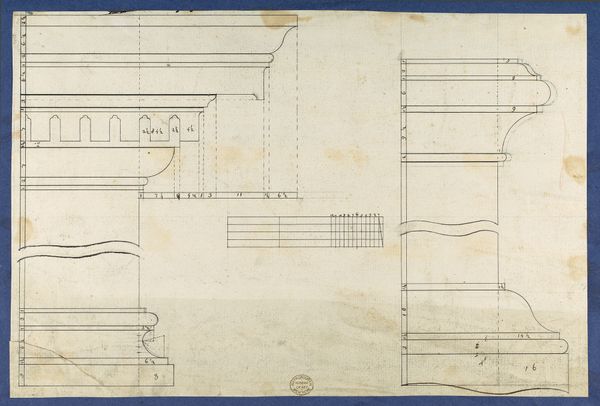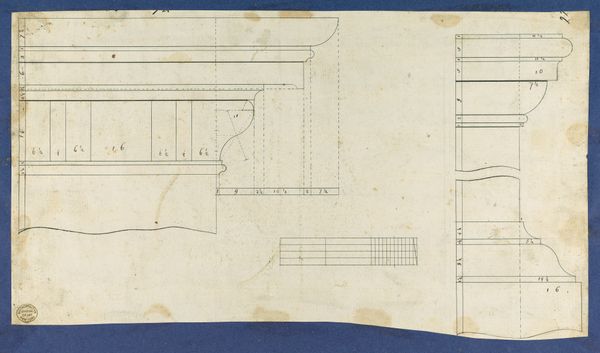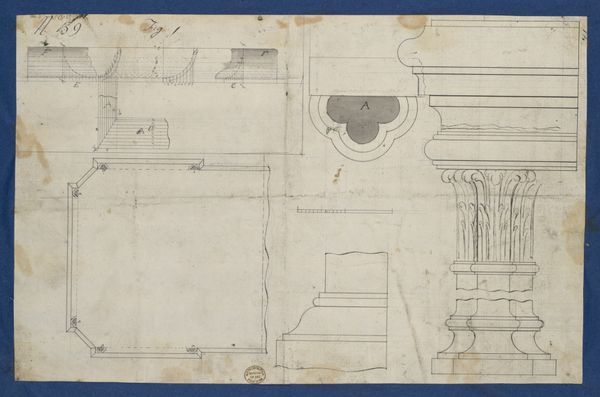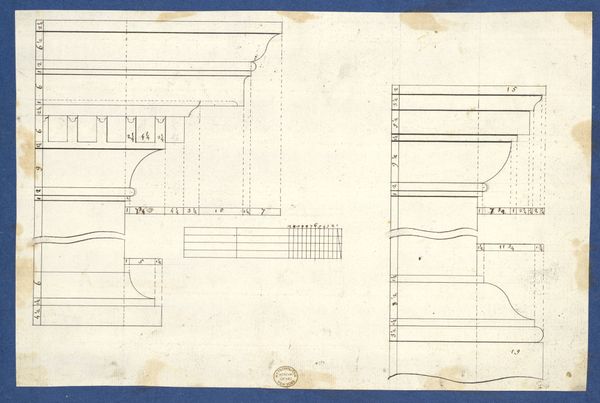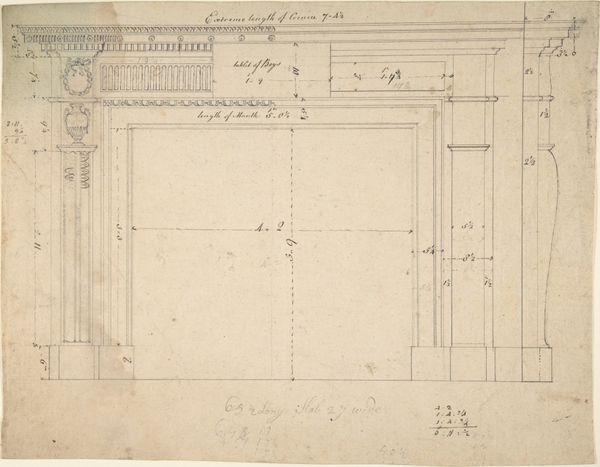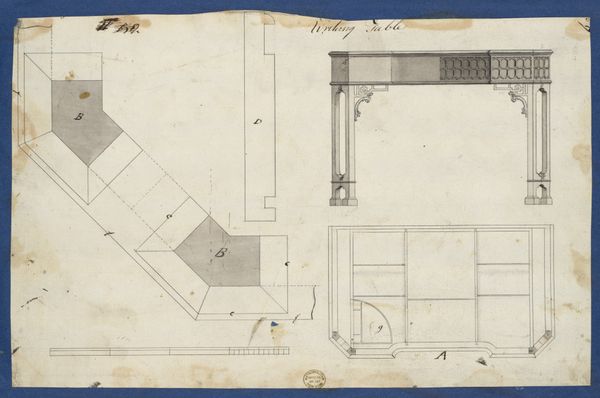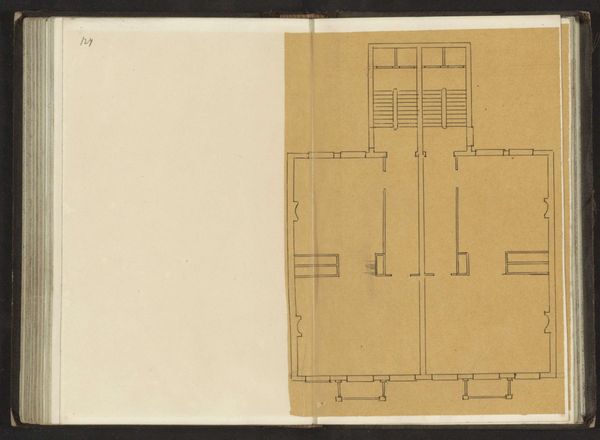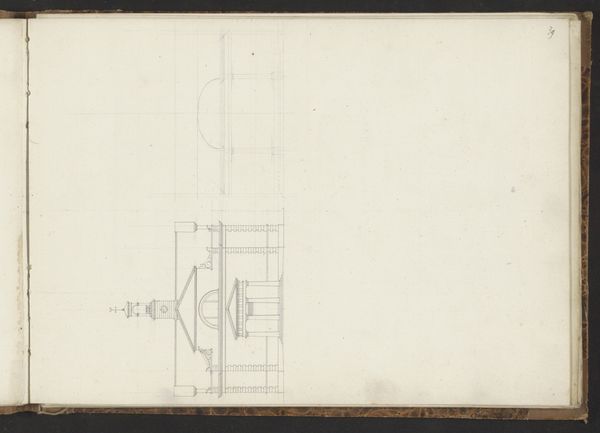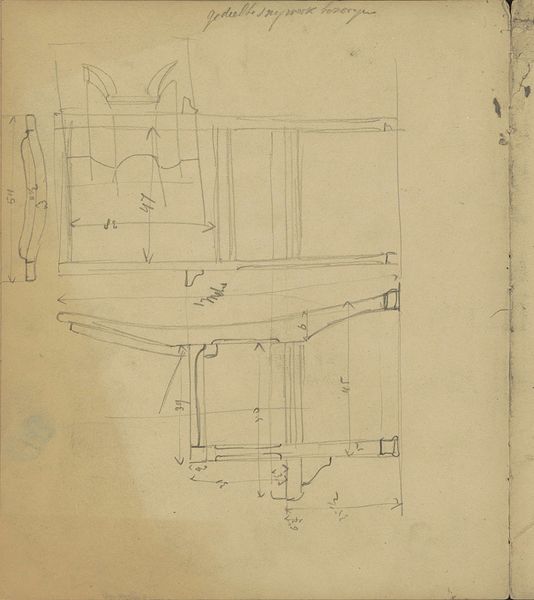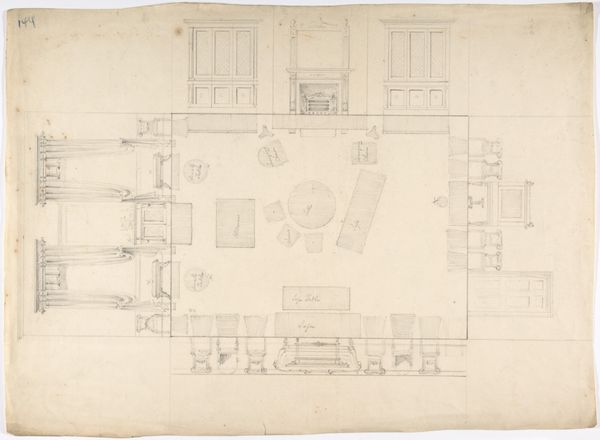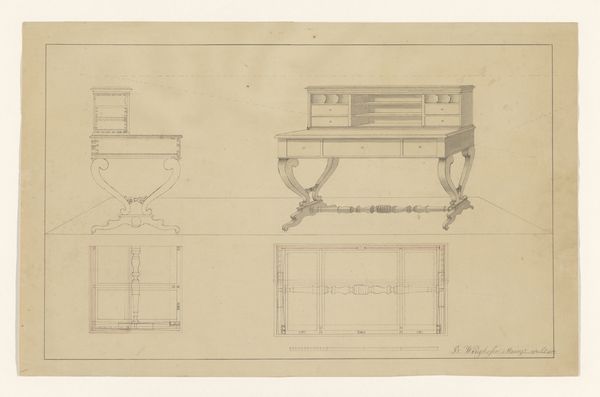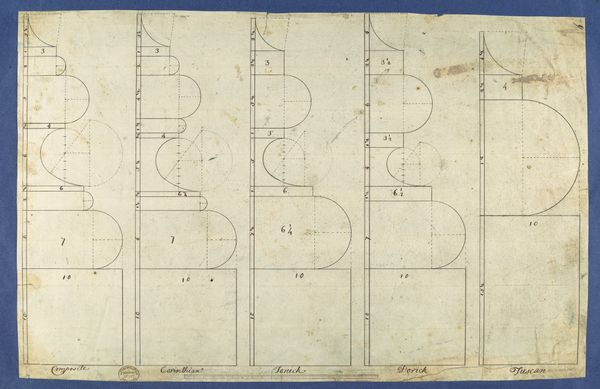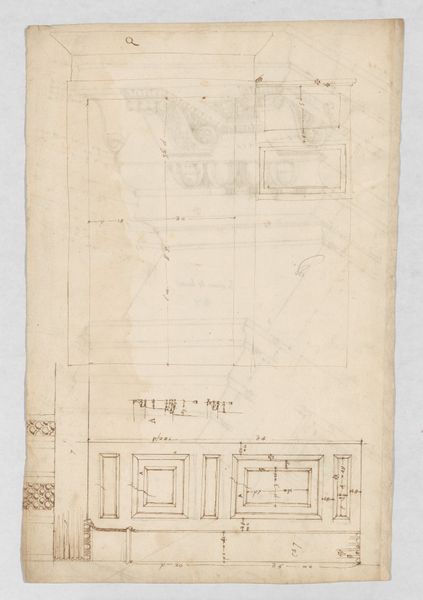
Moldings for Library Bookcase, from Chippendale Drawings, Vol. II 1753
0:00
0:00
drawing, print, paper
#
drawing
#
neoclacissism
# print
#
furniture
#
paper
#
historical fashion
#
geometric
#
academic-art
Dimensions: sheet: 8 5/8 x 13 1/4 in. (22 x 33.6 cm)
Copyright: Public Domain
Editor: This is a drawing from 1753 by Thomas Chippendale, titled "Moldings for Library Bookcase." It's a print on paper, showcasing different architectural moldings. It's fascinating to see such a technical drawing presented as a work of art. What can you tell us about the historical context and social implications of such drawings being displayed in a museum setting? Curator: Well, the presence of a drawing like this in a museum tells us a lot about how we value and understand craftsmanship and design. In the 18th century, pattern books like Chippendale's were incredibly influential in shaping the tastes of the rising middle class. Displaying it now, framed and preserved, elevates it from a utilitarian blueprint to a cultural artifact. It asks us to consider the politics of taste - who got to decide what was stylish, and how were these ideas disseminated? Does the mass production potential suggested by these designs impact how we perceive it? Editor: So it's not just about the aesthetic value of the drawing itself, but the socio-economic factors surrounding its creation and reception? Curator: Exactly. Consider how the availability of printed designs impacted local craft traditions. Did it democratize design, allowing more people to access fashionable styles? Or did it standardize production, potentially marginalizing regional variations and skills? Also, the Metropolitan Museum's acquisition and display of this piece reflect its own history of shaping taste and defining what constitutes "high" art. It invites critical inquiry on whose narratives and cultural productions we deem worth preserving and showcasing. Editor: I never considered the social implications of a bookcase design before. It sounds like this drawing embodies a lot of the power dynamics of the 18th century and the enduring influence of institutions in shaping our aesthetic values. Curator: Indeed. Reflecting on pieces like this one enables us to trace how objects are entangled with political and social currents. It changes how we perceive our domestic space, realizing it as a convergence of history and cultural preference. Editor: It’s really eye-opening to think about design in this way. I'll definitely look at furniture differently from now on!
Comments
No comments
Be the first to comment and join the conversation on the ultimate creative platform.
